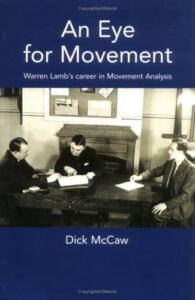 After his apprenticeship with Laban and Lawrence, Lamb set up his own consulting business in 1952. Over the next dozen years, he tested what he had learned in a variety of applications – giving advice on short-listed candidates, career counseling, even executive head-hunting.
After his apprenticeship with Laban and Lawrence, Lamb set up his own consulting business in 1952. Over the next dozen years, he tested what he had learned in a variety of applications – giving advice on short-listed candidates, career counseling, even executive head-hunting.
Warren took Laban’s ideas seriously, but he was also capable of thinking about them independently.
For example, Laban and Lawrence had applied trait and factor theory to their industrial work — define the effort factors needed in the job, identify the effort traits of the worker, and see how they match.
Based on this, Lamb developed a 40-item list of factors for managerial roles, painstakingly matching these to the effort and the shape traits of managers and job candidates. After making hundreds of such comparisons, Lamb refined this 40-item list to the much simpler Framework of Management Action and Interaction used today.
These elegant Frameworks testify not only to Lamb’s capacity for independent thought, but also to his enormous creativity. Find out more in the next blog.
